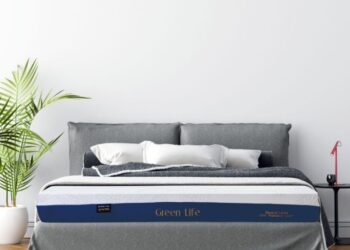Methods
The clinical use of Algeness has expanded greatly during the last several years. In order to understand the reason behind the positive effects and success of this injectable, one must be introduced to its biochemical composition and mechanism of action. It contains a gel of biocompatible, highly purified agarose in different concentrations (1%, 1.5%, 2.5%, and 3.5%), sodium and water for injectable preparations. The 2.5% and 3.5% products include also non cross-linked hyaluronic acid in very low concentrations (0.5% and 0.4% each) Algeness fillers show long lasting results over to 12 months demonstrated by clinical studies. The low-density Algeness 1% and 1.5% have a duration of 4-8 months or more and the higher density preparation of 2.5% and 3.5% a duration of 8-12 months or more (4,5).
Agarose is a polymer, extracted from the species of red algae known as agarophytes (derived from the genus Gelidium and Pterocladia) and one of the two principal components of agar. It is purified from agar by removing agar’s other component, agaropectin (6). The high-strength gelling properties of agar are provided by agarose and the viscous properties by agaropectin (7).
Chemically, agarose is a neutral polysaccharide of a long chain of disaccharide units, formed by two rings of 6 atoms. On each ring there is one oxygen and 5 carbon atoms and one ring contains only one OH group, while the other contains three. In presence of water, Agarose forms hydrocolloids. Moreover, it is free from toxicity of microorganisms and free from impurities. Algeness is colorless and painless during injection due to isotonic and isosmotic characteristics (4).
Algeness is contained in a sterile syringe (not pre-mixed with any anesthetics), connected with a hub to an empty, second syringe. This allows for mixing of the gel with 0.2 mL lidocaine 1-2%. It is recommended to move the product back and forth from one syringe to the other at least twenty times for local anesthesia if desired, and to obtain a better consistency prior to injection. The polysaccharide chains spontaneously align over time, increasing the product’s viscosity. Mobilizing the product by exchange between the two syringes restores optimal injectability. Agarose is composed of a three dimensional “plastic reticulum” that is slowly absorbed (8).
It is a well-tolerated injectable, held in place by the macrophage infiltrate, showing no migration.
Algeness can be positioned from the subcutis to the mid or deep dermis, according to the treatment layer and the chosen concentration of Agarose. However, intradermal injection is not recommended. Once the gel is injected into the subcutis it provides supplementary viscoelasticity, volume and shaping to the intracellular matrix of the connective tissue. This is the main mechanism of action, that allows treating cases of connective tissue deficits, dermal atrophy, traumatic lesions, correction of wrinkles, skin folds, scars and also deep tissue augmentations.
Prior to injecting the product, the application area must be disinfected, to minimize the infection risks.
Overcorrections should be avoided. Additional corrections can be required to improve the functional or aesthetic outcome after a period of one week to ten days.
For safety reasons the injection must be performed slowly, by applying a constant, gentle pressure on the syringe plunger to overcome the initial extrusion force of the injection. Proper consideration must be given to precise deposition of the product with an atraumatic technique at the lowest possible risk. The treated area should be gently massaged immediately after the injection, to achieve a homogenous distribution of the filler. This also allows for shaping the injectable material. As with any injectable material, Algeness should not be injected intravascular to avoid embolisation, vessel occlusion and necrosis. Serious adverse events are very rare. Swelling and skin erythema around the application site resolves spontaneously within a few hours to a week. Agarose is a completely biodegradable product. It is removed from the injection site by a process of macrophage phagocytosis and intracellular metabolization in the pentose cycle. This very special ability is the reason that gives Algeness its safety, but it can be also fully dissolved by injecting vitamin C (250-500 mg/mL in 0.1-0.2 mL aliquots), saline solution or hyaluronidase into treated areas (1).






